






Job Kozhamthadam (Ed.) (New Delhi: Intercultural Publications, 1997). xx+305.
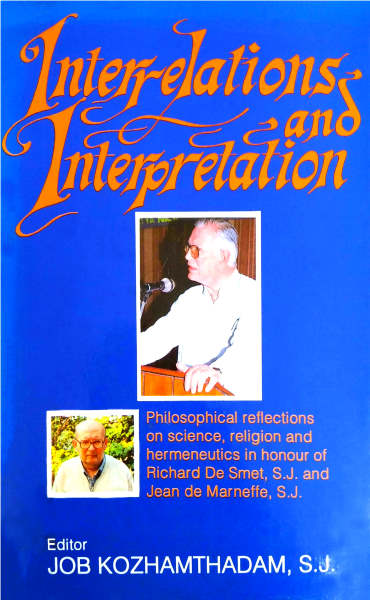
This volume of eleven original papers by well-known scholars is a philosophical exploration into two dominant themes of the intellectual world today; the interrelations among different disciplines, which reveal the complex nature of reality, on the one hand, and interpretation which attempts to unravel that complexity, on the other. Beginning with an elaborate examination of the interrelations among science, philosophy and religion in the first six papers, the volume proceeds to a purposeful discussion of how hermeneutics and various techniques of interpretation can help us to attain a deeper and sharper understanding of reality The final chapter presets an existentialist view of the dynamic and creative aspects of lived time in its relationship with the sundry dimensions of human life.
Kuruvilla Pandikattu (World-Life-Web and Zen Publications, Mumbai. 2001). xvi+344.

This is a wonderful book on the multi-faceted dimensions of the monk, mystic and sage Bede Griffiths. In this book, an Indian reflects over the greatness of a European born man who eventually embraced and reconciled West and East, masculine and feminine, science and religion, God and his creation. The profound Indian notion of Advaita may be regarded as the philosophical basis for his quest. Based on the life experiences of Griffiths, we are convinced that today’s world needs dialogical interaction among and between sciences, religions and cultures. This book plead for a culture of dialogue, where individual identities are affirmed, mutual differences celebrated and ongoing dialogue fostered.
Job Kozhamthadam (Pune: ASSR, Series 1, 2002). 239.
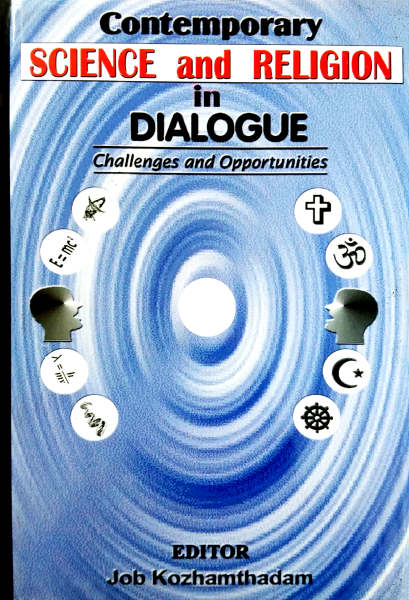
This volume carries a series of scholarly papers which focuses on the challenges recent developments in science pose to religion, and the opportunities they offer to religion. In this volume nine scholars, each with a different background and expertise, discusses the scientific developments in each one’s respective area of specialization and point out some of the challenges they pose to religion. The main thrust of the book is that these challenges are not to be taken as attacks or threats to religion, rather as opportunities to reflect more deeply and critically on some of its presuppositions and claims in order to make greater progress and to ensure richer growth.
Job Kozhamthadam (Pune: ASSR, Series 2, 2003). 282.
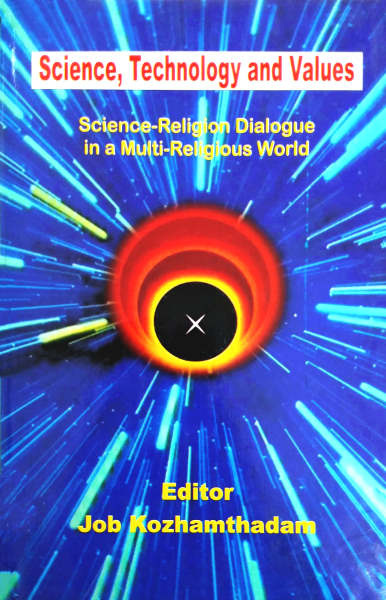
This volume has arisen from the international symposium organized by ASSR (Association of Science, Society, and Religion) of Pune and sponsored by CTNS-SRCP (Center for Theology and the Natural Sciences – Science and Religion Course Program) of Berkeley, California, USA. It has three principal parts. The first part focuses mainly on certain general issues of interest in science-religion dialogue. The second part presents studies on certain recent developments in different branches of science, pointing out how they raise certain important issues for religion and society. The third part, on the other hand, contains sympathetic studies on some of the responses of contemporary religions to the challenges and opportunities offered by recent scientific developments.
Augustine Pamplany & Job Kozhamthadam (Pune: Association of Science, Society and Religion, Jnana Deepa Vidyapeeth, 2003). 208.
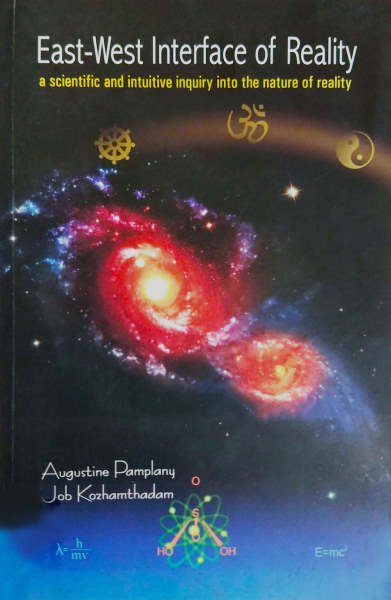
What are the philosophical assumptions in the novel vision of the new physics? What are the analogical parallels that exist between physics and Eastern mystical traditions? What are its insights and implications for a new understanding of Reality? How can we translate this new wisdom into the domains of our cultural and social life? These and related questions form the subject matter of this book. The book does not aiming at a final and definitive answers to the quest for a new vision of Reality. That will have to wait until better and more powerful nuclear accelerators, telescopes, etc., are developed. Even then one cannot be very optimistic since the nature of reality seems to defy all attempts at obtaining definitive answers. What is attempted here is to critically examine the philosophical and metaphysical assumptions of the scientific cosmological data and use them to spell out some of the epistemological, anthropological and theological implications of a holistic Reality. With this end in view, in the first of the book part we deals with the "fragmentation" of Reality, which analyses the disfigured and distorted picture that history has drawn of Reality. The second part is "accumulation" where data is taken for a new vision from both the East and the West. The final part is "integration" - an attempt to draw insights from an interdisciplinary synthesis to develop a harmoniously integrated, scientifically justified, philosophically satisfactory, culturally reformative and realistically holistic vision of Reality.
Augustine Pamplany (Aluva: Institute of Science and Religion, 2003). 222.
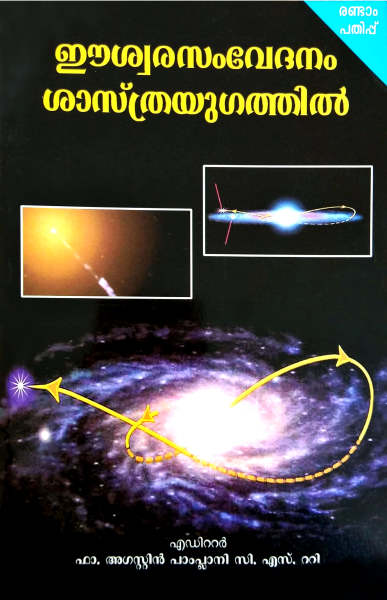
ഈശ്വര സംവേദനം ശാസ്ത്രയുഗത്തില്
ഇന്നു സാംസ്കാരികമായ സകല അതിര്വരമ്പുകളേയും ഭേദിക്കുന്ന മാനവരാശിയുടെ സാര്വത്രിക ഭാഷകളില് സുപ്രധാനമാണ് ശാസ്ത്രത്തിന്റെ ഭാഷ. ശാസ്ത്രത്തിന്റെ ഭാഷയ്ക്ക് ഇന്ന് ഒരു പ്രതീകാത്മകതയുണ്ട്. ഈ പ്രതീകാത്മതയ്ക്കു പിന്നില് അതിഭൗതികമായ ദര്ശനസഞ്ചയങ്ങളുടെ തന്നെ ആവിഷ്കാരമുണ്ട്. ശാസ്ത്രഭാഷയുടെ കാവ്യാത്മകതയും അതിസ്വാഭാവികതയുമാണ് മതദര്ശനങ്ങളുടെ ഔന്ന്യത്തിലേക്ക് ഇന്നു ശാസ്ത്രത്തിനു വാതായനങ്ങള് തുറന്നുകൊടുക്കുന്നത്. മതശാസ്ത്ര സമന്വയത്തിന്റേതായ ഒരു നവീന സംസ്കൃതി ഇന്ന് ആഗോളതലത്തില് തന്നെ സംജാതമായിക്കൊണ്ടിരിക്കുകയാണ്.
ഈ നവീന സംസ്കൃതിയുടെ വിവിധ വശങ്ങള് അപഗ്രഥിക്കുന്ന പതിനാലു ലേഖനങ്ങളുടെ സമാഹാരമാണ് ഈ ഗ്രന്ഥം.
Job Kozhamthadam, (Ed.). (Pune: ASSR, Series 3, 2004). 226.
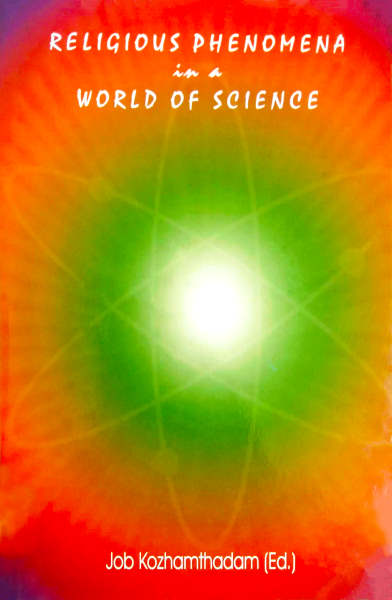
The present volume, Religious Phenomena in a World of Science, attempts to highlight the other side of the same theme that was discussed in ASSR Series volume 1. It is a similar theme in the reverse order: It discusses a number of religion-related phenomena and highlights some of the questions and riddles they raise to the scientific world of ours. The purpose of these studies is not to assess the comparative power and effectiveness of science and religion to influence each other. Rather it is just another attempt to point out that our world is larger and richer than what religion alone or science alone can comprehend. On the other hand, science and religion together can fathom it better and deeper. Our hope is that this book will serve as an invitation to scientists and religious scholars to dialogue with each other in order to explore how they can pool their resources together to understand the mysteries of nature better and to build up a happier world.
Augustine Pamplany (Aluva: Institute of Science and Religion, 2004). 138.
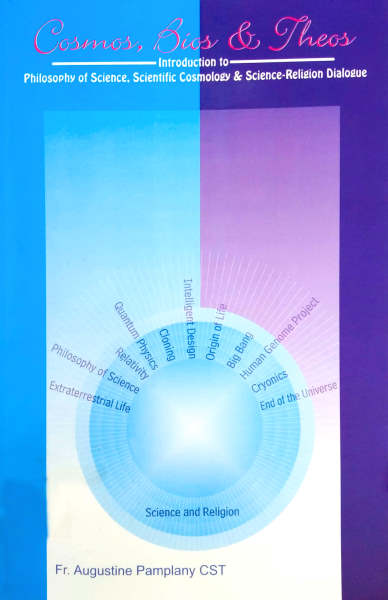
Cosmos, Bios and Theos is prepared as a Textbook in Philosophy of Science and Scientific Cosmology from a Philosophical and Religious Perspective. The fourteen chapters of the book deal with topics such as, the Intellectual Setting of the Philosophy of Science, Schools of Philosophy of Science, Theory of Relativity, Quantum Mechanics, Hawking’s No-boundary Theory, The Big Bang Origin of the Universe, The Future of the Universe, Cosmic Intelligent Design, Origin of Life, Exobiology, Human Genome Project, Cloning, Cryonics and Science-Religion Dialogue.
Augustine Pamplany (Bangalore: Asian Trading Corporation, 2005). 255.
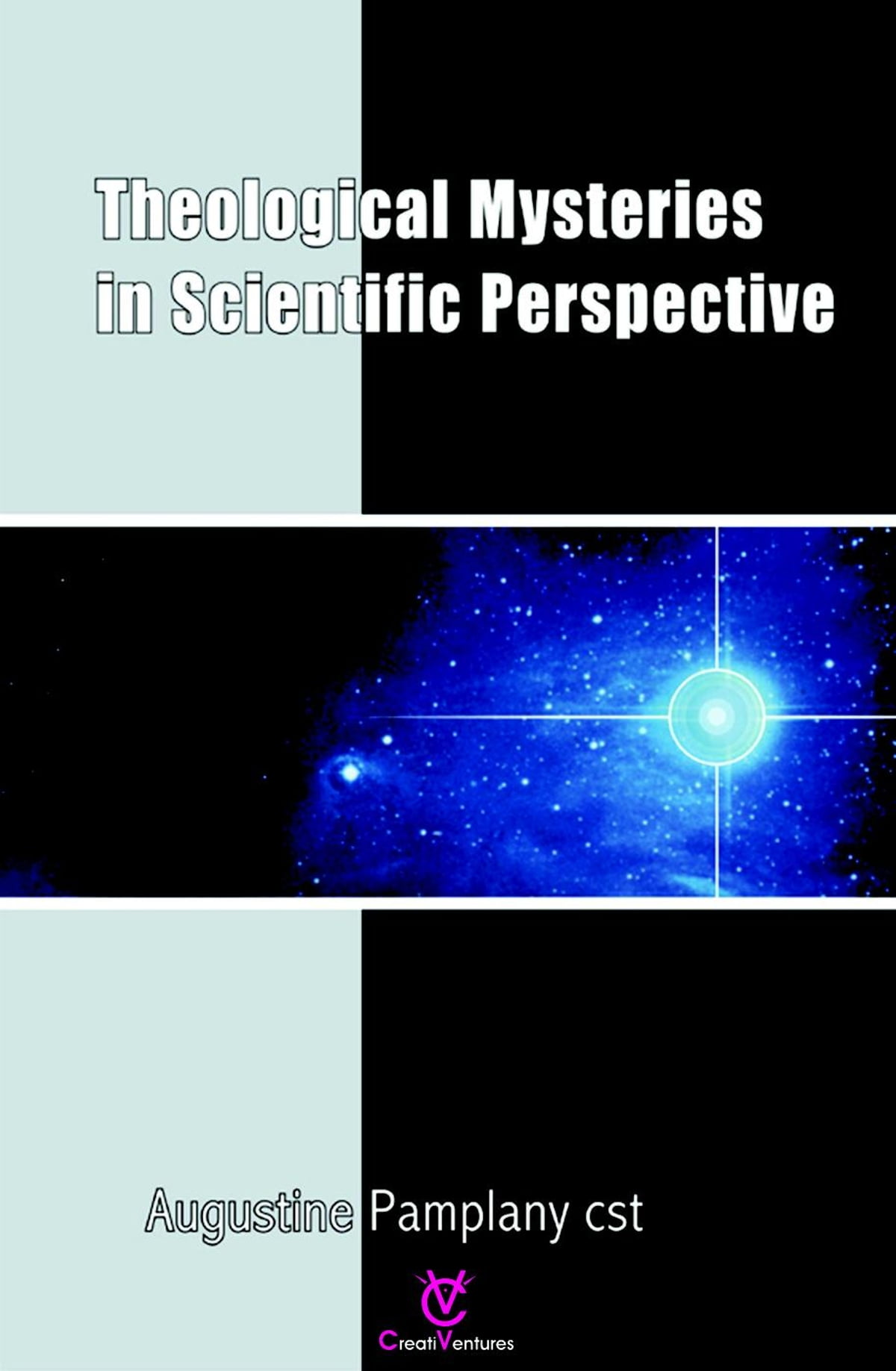
The contemporary experience of the natural sciences envisages a very substantive and constructive interaction between science and theology. In tune with the global momentum of the science-theology interface, this book attempts to spell out some of the theological implications of the sweeping changes on the scientific scenario, revisioning several perennial theological themata, in physical, biological and cosmological categories. How to interpret the profound insights of the Christian revelation in a worldview that is almost imperialistically dominated by science? In a scientific culture, how do we still meaningfully talk of the Biblical conception of God creating the world? What are the natural, cosmic and secular implications of the summit points of Christian revelation like the Holy Trinity, the Incarnation, Eschatology, etc.? What are the scientific nuances of the theological vision of the human nature as imago Dei? These are some the questions addressed in the book.
Job Kozhamthadam (Ed.). (Pune: ASSR Series 4, 2005). 229.
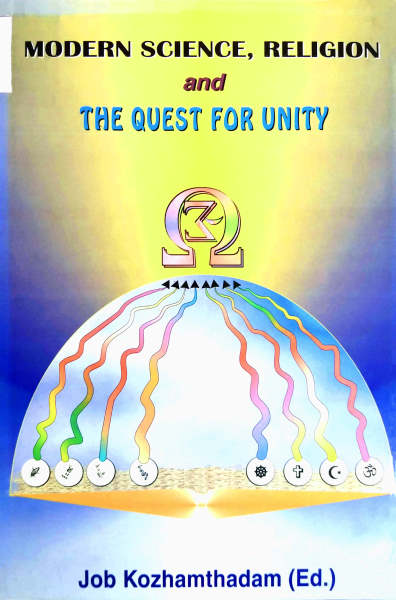
The quest for unity is perhaps the most commonly shared heritage and mark of all religions. In fact, religions can be considered a profound expression of human’s innate longing for unity - unity with the Divine, unity with fellow humans and unity with the cosmos. Mystical union with the Divine has been the yearning of all true religious believers. The same is true of science as well since the whole history of modern science can rightly be looked upon as a progressive march towards greater unification. Developing a Grand Unified Theory (GUT) has been the unfinished dream of many a great scientist. Is this long-cherished common quest just a casual coincidence or a pointer to a profound truth? What does this common quest say to the men and women of the twenty-first century? Can this common goal be a creative and constructive meeting ground for science and religion? How can this shared search touch and transform our lives today, particularly in the multi-religious, multicultural and multiracial context of India? How can this deep-felt longing be turned into an effective tool to harness the latest findings of science and the deepest intuitions of religions to build up a better humanity and a better cosmos, particularly in contemporary India? These and related questions form the basic theme of this fourth volume of the ASSR Series. The eleven papers by eminent scholars from different cultural, academic and religious backgrounds attempt to argue that the quest for unity can serve, in varying degrees and forms, as a common platform for a meaningful and creative interaction between modern science and religion.
Victor Ferrao (Pune: Sangam Publications, Goa, Jnanam Pune, 2005.)
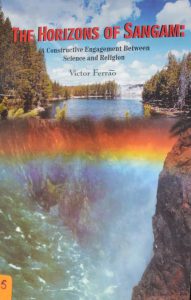
Victor Ferrao. Pune: Sangam Publications, Jnanam Pune, 2005).
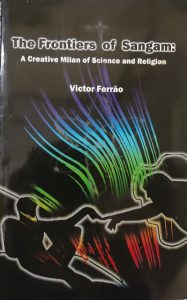
Kuruvilla Pandikattu (Ed.) (Pune: ASSR, 2006). 448.
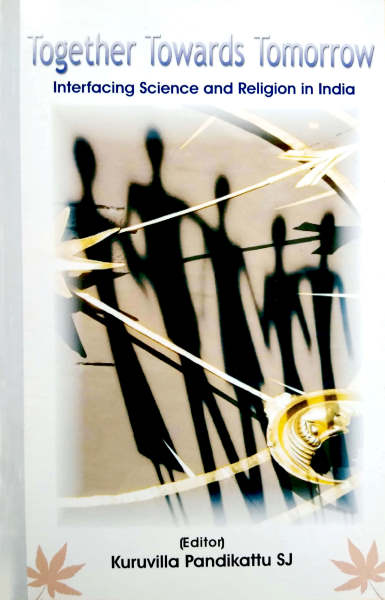
This book would help the readers to appreciate the difference that exists among us and at the same time instill the need to work together for a common cause. “Be different and be together,” could be the theme of this book as well as of our life, particularly in India. Retaining our individuality and respecting each other, the book would urge the reader to work together for the common cause of fostering life in its totality. So our individuality could be a contribution to the collectivity. Our future will include our differences. So the book urges the scientists, theologians, philosophers and common people to move together towards a future where all of us can truly feel “at home.” In this noble venture, science, religion and philosophies have significant contribution to make! Hence, the title of this book: Together Towards Tomorrow!
Sarojini Henry. (Delhi: Indian Institute of Science and Religion, Pune & ISPCK, 2006). xx+222.
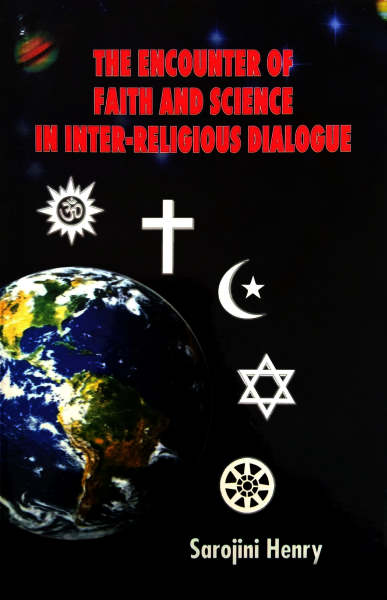
In spite of the significant trends in contemporary interreligious dialogue, scholars are increasingly finding models on which to base the conversation. It is in this context that the question of the relevance of the interaction of science and religion as a common ground for interreligious dialogue is being attempted. The book shows that the encounter of faith and science would provide a constructive meeting point for interreligious dialogue. The aim of this book is to show that the encounter of science and religion would provide a constructive meeting point for interreligious meetings. The challenges science poses are real and serious, and religions can face them creatively and constructively only if they rise above their internal differences and focus on the many areas that bind them together. This is the primary message of this book this makes this book special for serious and committed men and women of science and of religion.
Augustine Perumalil (Pune, Delhi: Indian Institute of Science and Religion, Pune & ISPCK, 2006). xii+198.

This book begins with an analysis of science, scientific activity, and seeks to locate science among other endeavors such as philosophy, religion and ethics. Scanning through the vast literature on the problems of philosophy of science, this book proceeds to look into significant ways in which science is viewed by three prominent schools of thought – positivism, realism and historicism. It asks questions about how we come to know the world through observation and construction of theories, about nature of knowledge and its validity and certitude. The book ends with a reflection on the scientific procedure and its philosophical implications. This book is meant to serve as an introduction to the central problems that define the philosophy of science today and provide a comprehensive understanding to the scientific knowledge and practice.
Augustine Pamplany (Ed.). (Aluva: Institute of Science and Religion, 2006). 270.
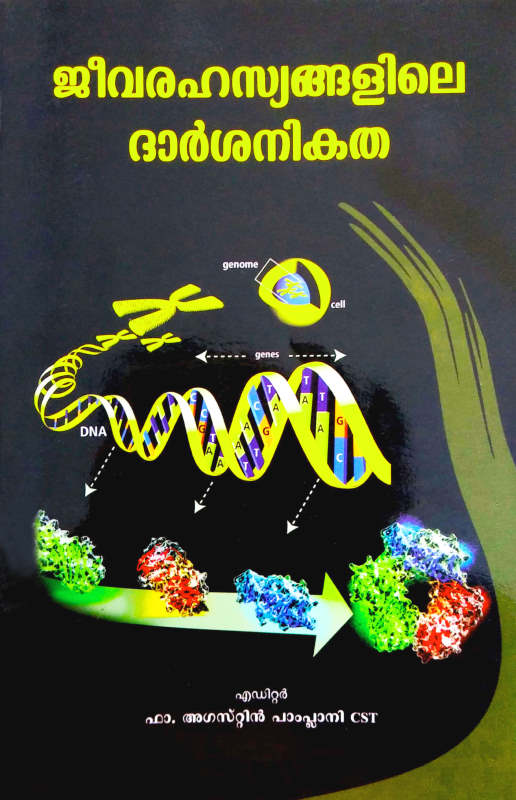
ജീവരഹസ്യങ്ങളിലെ ദാര്ശനികത
മനുഷ്യന്റെ യുക്തിവിചാരത്തിന്റെ നിദര്ശനമായ ശാസ്ത്രം ജീവന്റെ തന്നെ വിസ്മയത്തിന്റെ ഭൂമികയായി മാറുന്നത് ശാസ്ത്രത്തിന്റെ ഒരു അതിഭൗതിക സാക്ഷാത്കാര പൂര്ണ്ണിമയാണ്. ജീവന്റെ ഈ വിസ്മയഭൂമികയെ എത്രമാത്രം ശാസ്ത്ര മേഖലയില് ആസ്വദിക്കാനാവും എന്നന്വേഷിക്കുന്നത് കൗതുകകരമാണ്. വിമര്ശനവിധേയമാക്കാത്തതും ദൈവാവിഷ്കാരത്തിന്റെ നൂതനവേദികളുമായി സംവദിക്കാത്തതുമായ മതത്തെയും ദാര്ശനിക, ധാര്മ്മിക ആഭിമുഖ്യങ്ങളെ ബഹുമാനിക്കാത്ത ശാസ്ത്രത്തെയും ഇവിടെ ഒരുപോലെ വിമര്ശനവിധേയമാക്കിയിരിക്കുന്നു. ശാസ്ത്രപശ്ചാത്തലത്തില് നിന്നുകൊണ്ട് ജീവരഹസ്യങ്ങളുടെ ദാര്ശനികവും മതാത്മകവും ധാര്മ്മികവുമായ അന്തര്ധാരകളെ പരിശോധിക്കുന്ന പതിനാല് ലേഖനങ്ങളാണ് ഈ പുസ്തകത്തിന്റെ ഉള്ളടക്കം. ഉള്ളടക്കം - അവതാരിക - ഡോ. കെ. എസ് രാധാകൃഷ്ണന്; ആമുഖം - ഡോ. അഗസ്റ്റിന് പാംപ്ലാനി; ശാസ്ത്രത്തിന് ഒരു മൗലീക സദാചാര സംഹിത - ഡോ. സുകുമാര് അഴീക്കോട്; ദാര്ശനിക വിചാരം ജീവന്റെ ലിപികളില് - ഡോ. കെ. ബാബു ജോസഫ്; ജീവന്റെ ഉത്ഭവം ആകസ്മികതയോ രൂപകല്പനയോ? - ഡോ. അഗസ്റ്റിന് പാംപ്ലാനി; ജൈവതന്മാത്രാവിപ്ലവം: പാശ്ചാത്യ ജൈവശാസ്ത്രത്തിന്റെ വെല്ലുവിളി - ഡോ. ഫിലിപ്പ് ആര്. സ്ലൊവാന്; ബയോടെക്നോളജി: നൂതന പ്രവണതകളും മതദാര്ശനിക ചിന്തകളും - ഡോ. സി. എസ്. പൗലോസ്; ബയോടെക്നോളജിയും ധാര്മികതയും: ഡോ. മാത്യു മലേപ്പറമ്പില്; ക്ലോണിംഗ് ധാര്മ്മിക വീക്ഷണത്തില്: ഡോ. ഹോര്മിസ് മൈനാട്ടി; കാണ്ഡകോശ ഗവേഷണത്തിന്റെ നൈതിക പരിപ്രേക്ഷ്യം: ഡോ. എസ്. ജോണ് ബ്രിട്ടോ; ഹ്യൂമന് ജീനോം പ്രൊജക്റ്റും മനുഷ്യനിയതിയും: ഡോ. ജോബ് കോഴന്തടം; മരണത്തിന്റെ മരണം : മതാവബോധത്തിന് ശരീരാനശ്വരതയുടെ വെല്ലുവിളികള്: ഡോ. കുരുവിള പാണ്ടികാട്ട്; ന്യൂറോ സയന്സ്: മസ്തിഷ്കത്തിലെ ദൈവാവിഷ്കാരം: അബ്രഹാം താന്നിയേല്; വിവരസാങ്കേതിക വിദ്യയും കൃത്രിമ ബുദ്ധിയും: മൂല്യവ്യവസ്ഥിതികളില് ഇവയുടെ സ്വാധീനം - ഡോ. അഡ്രിയാന് എം. വ്യാര്ഡ്; 'ഉത്തരമാനുഷിക മനുഷ്യന്': നാളെയുടെ വെല്ലുവിളികള്: ഡോ. കെ. ബാബു ജോസഫ്; യുംഗിന്റെ മൂലബോധത്തിലേക്കൊരു മടക്കയാത്ര: പി. കേശവന് നായര്.
Joseph Mathew (Kottayam: Jeevan Books and Vidyabhavan Publications, 2010). xviii+262.
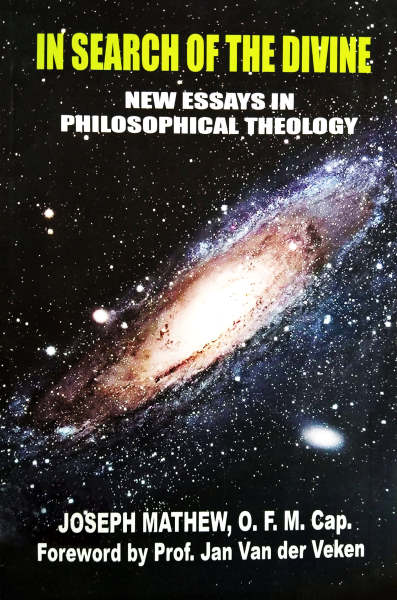
The books tackles some of the most interesting topics that any philosopher or theologian could think of, such as the existe4nce of the divine, the absence of the Divine, the cosmic disclosure of the divine, metaphysical reflection on the divine, the love divine, prayer to the Divine, etc. The originality of the book is the wideness of scope and the great variety of approaches to the problem, brought together in a convincing way. It combines the continental approach with the Anglo-Saxon approach of linguistic analysis.
Augustine Pamplany (Ed.) (New Delhi: Serials Publishers, 2011). xiv+242.

Owing to the plethora of theological and philosophical accommodation that the theory of evolution has enjoyed over the decades, the voice of the ultra-Darwinists is now almost a cry in the wilderness. Atheism on Darwinian grounds, now, rather than yielding to intellectual fulfillment, testifies to the intellectual bankruptcy, philosophical mediocrity, epistemic fixation, and the sabotage of almost every logical axioms and rational standards. These claims will be substantiated by the articles of this volume on evolution. The series of articles in this volume engage themselves with a positive and explorative dialogue between evolution and religious belief. The thrust of this entire volume, in general, is that the clichéd notion of science-religion conflict is now no news to any informed person. And, in particular, we emphasize that rather than tampering evolution with fixated and parochial soliloquies, an open and explorative approach can open up deep depositories of truth and knowledge at stake in it. The papers here argue that evolution should be sustained on the horizons of our religious and existential meanings for there is much more that has to be harvested from the hidden potentials of this theory.
Victor Ferrao (Delhi: ISPCK, Delhi, IISR, Pune, 2013).
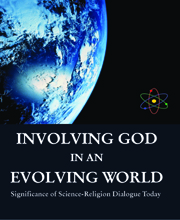
The author locates our understanding of God and of the world in a dynamic and evolutionary perspective. Taking into account the modern scientific world-view seriously, the author attempts to dialogue with our understanding of God and the of the world. This book challenges our traditional understanding of God as the “Unmoved Mover” and of the world as maya or illusion. The present study focuses on God who forms the fulcrum of most religions. Developments in contemporary science problematize our traditional God-talk and God-though and challenge us to rethink god in the merging dynamic worldview. It is hoped that this study will have significant implications for theology, anthropology, ethics, etc.
Augustine Pamplany (Ed.) (Thalassery: Alpha Institute of Theology and Science. 2013). 192.
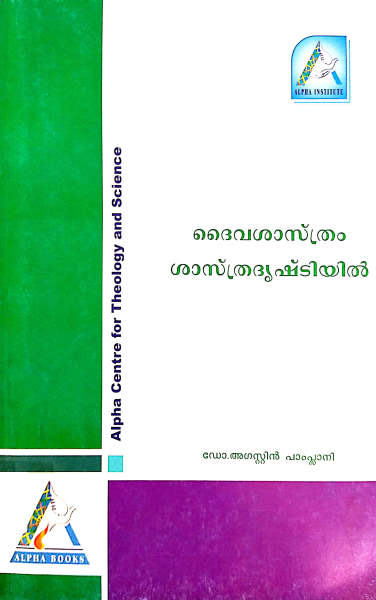
വിപ്ലവാത്മക ശാസ്ത്രീയസിദ്ധാന്തങ്ങളായ മഹാവിസ്ഫോടനം, ക്വാണ്ടം തിയറി, കയോസ് സിദ്ധാന്തം മുതലായവയിലൂടെ രൂപപ്പെട്ട പ്രപഞ്ചത്തിന്റെ ഉത്ഭവത്തേയും പ്രകൃതത്തേയും അന്ത്യത്തെയും കുറിച്ചുള്ള ഇരുപതാം നൂറ്റാണ്ടിന്റെ ശാസ്ത്രീയ ഉള്ക്കാഴ്ച്ചകള് നമ്മെ പുതിയ ലോകവീക്ഷണത്തോട് അടുപ്പിച്ചു നിര്ത്തുന്നു. അനുമാനപരമായ പ്രക്രിയയിലെ അടിസ്ഥാനപരമായ അജ്ഞതയെ തുടച്ചുനീക്കിയും അതിന്റെ ചില അടിസ്ഥാന നിഗമനങ്ങളെ പുന:ക്രമീകരിച്ചും പുതിയ ശാസ്ത്രീയ ലോകവീക്ഷണം നിരവധി ദാര്ശനിക ദൈവശാസ്ത്ര പഠനങ്ങളുടെ നവീകൃത ആശയ സ്വാംശീകരണം സാധ്യമാക്കുന്നു. ശാസ്ത്രവും ദൈവശാസ്ത്രവും തത്ത്വചിന്തയും പരസ്പരം സമ്പന്നമാക്കുന്ന യാഥാര്ഥ്യത്തിന്റെ ഇത്തരമൊരു പുനര്വീക്ഷണത്തില് സംസാരിക്കുന്ന കഴുതകളും ആര്പ്പുവിളിക്കുന്ന കല്ലുകളും അതിസ്വാഭാവികമാകുന്നില്ല! ശാസ്ത്രത്തിലേക്കുള്ള ദൈവശാസ്ത്രപഠനങ്ങളുടെ വിമര്ശനരഹിതമായ സ്വീകരണവും വ്യത്യസ്തവും സ്ഥിരീകരിക്കപ്പെടാത്തതുമായ ശാസ്ത്രീയ സിദ്ധാന്തങ്ങള് ദൈവശാസ്ത്രത്തില് ചിന്താരഹിതമായി കടന്നുകയറുന്നതും സത്യത്തിന്റെ ആധികാരിക ചിത്രത്തിന് ഹാനികരമാണ്. ശാസ്ത്രവും ദൈവശാസ്ത്രവും തമ്മിലുള്ള സര്ഗാത്മക സംവാദമാണ് ഈ ഗ്രന്ഥത്തിലെ പ്രമേയം. ക്രിസ്തീയ വിശ്വാസപ്രമാണങ്ങളുടെ മൗലിക സംജ്ഞകളായ സൃഷ്ടി, ത്രിത്വം, ക്രിസ്തുവിജ്ഞാനീയം, മാനവവിജ്ഞാനീയം, കൂദാശാദൈവശാസ്ത്രം തുടങ്ങിയവയുടെ ശാസ്ത്രീയ പ്രപഞ്ച വീക്ഷണത്തില് നിന്നും ഉള്ള വ്യാഖ്യാനമാണ് ഈ ഗ്രന്ഥം.
Joseph Mathew (Bangalore: Asian Trading Corporation, 2014). xviii+321
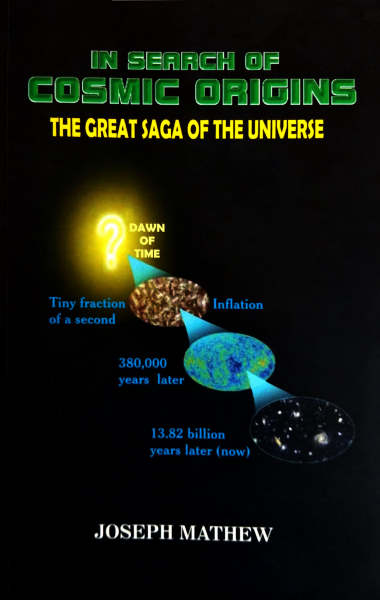
The universe is the greatest and most majestic object we can ever imagine or think of. Pondering over the universe, we humans ask searching questions about its origins. Why does the universe exist at all? How did it come into being? How will it end? Why is the universe the way it is? Basing on the best theories in contemporary physics and cosmology, the present book attempts to address these questions – and more, about the origin and evolution of the universe, galaxies, stars, solar system and the Earth reaching up to the humans – and the ultimate question about the foundation of all. The first part of the book narrates the saga which is the long story about the origin and evolution of the universe and of the rand cosmic structures. Reaching up to man. The second part of the book unfolds this story from Big Bang to man. The third and final part searches for answers to the ultimate questions about the universe. The search ends with the Cosmic Designer.
Augustine Pamplany (Ed.) (New Delhi: Serials Publishers, 2017).

The title of this volume, Mastery Meets Mystery, is an allusion to the metaphor, “Mastery of Science and the Mystery of Religion.” Scientific research, today, bear some significant implications for interpreting the mystery that is coined in the religions. Though, science, in its technological sense, is often considered as the mastery or control of nature, it should be noted that science in its true sense is one of the most important meaning-making enterprises of the humanity. The essays of this volume hold that the scientific quest for the mastery and control of nature today provides new tools and a new language for deciphering the notions of mystery coined in the religions and philosophies for long. The volume consists of 24 essays by reputed scholars in the field. https://www.amazon.com/Mastery-Meets-Mystery-Instersecting-Philosophy/dp/B01NBVNQM7
Joseph Mathew (Delhi: Media House, 2017). xvii+298
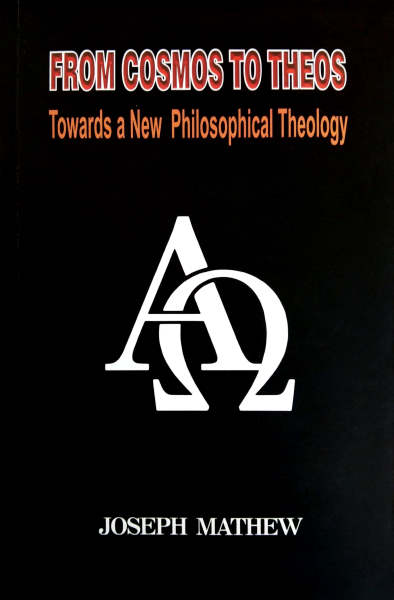
Contemporary science in particular physics and cosmology appear to have knocked to the doors of heaven. Scientists are confronted by ultimate question existence as never before at the frontiers of their disciplines. The knowledge of the universe converges on the reflection on God. This is the paradigm shift that taking place in contemporary philosophical theology; the present volume unfolds the story of this great revolution. The author is convinced that contemporary sciences contain seeds for a discourse on God. This volume is written with the conviction that there is an urgent need to talk about God, and that cosmology provides the best starting point for God-talk today. From Cosmos to Theos is intended to be a ‘construction’ of philosophical theology; in an epoch of deconstruction; it claims to be a ‘reconstruction;’ in an age of ‘incredulity to metanarratives,’ it is indeed a grand narrative.
Binoy Pichalakkattu (Ed.) (Bangalore: Asian Trading Corporation, 2018). 333.
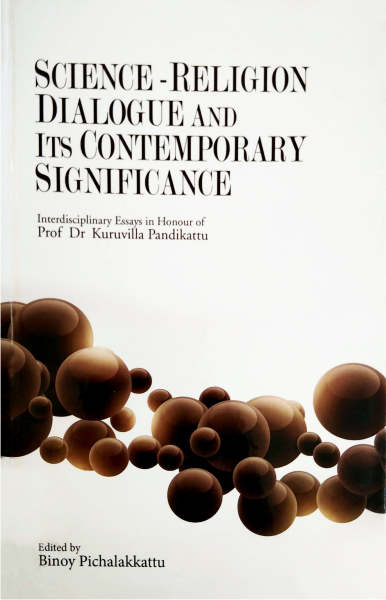
This volume is divided into six sections. The first section on “The Cosmological Origins,” deals with contemporary developments in cosmology, physics and astrotheology. The second section, titled “Biological Rootedness,” brings in biological and environmental platforms to interface science and religion. The next section on “Anthropological Openness,” highlights the anthropological implications for science-religion dialogue with reference to the theory of evolution, developments in technology, medicine and ethics. The fourth section, “Mathematical Perceptiveness,” suggests how mathematical concepts and theories be used to represent reality. The fifth section on “Neuroscientific Cognitiveness.” Introduces the researches in neuroscience that the spiritual experiences are associated with a number of observable neurological events and they are biologically observable and scientifically real. The final section titled, “Religious Reasonableness,” offers religious and philosophical inputs on faith and reason, ignorance and knowledge, science and mysticism.
Binoy Pichalakkatt (Kochi: Loyola Institute of Peace and International Relations, 2019). 112.
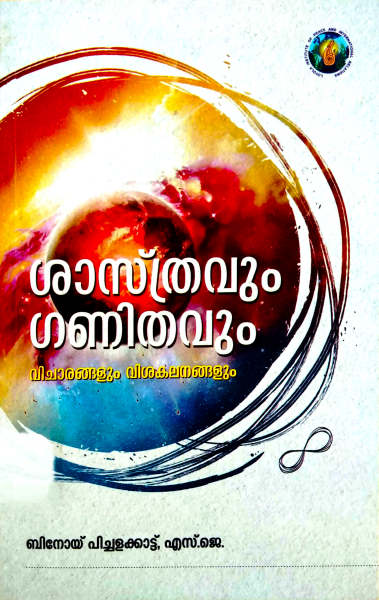
ശാസ്ത്രം, ഗണിതം, തത്ത്വശാസ്ത്രം, മതദര്ശനം, കല തുടങ്ങി വൈവിധ്യമാര്ന്ന വിഷയങ്ങള് ഇതില് ചര്ച്ച ചെയ്യുന്നു. ഗണിതശാസ്ത്ര ആശയങ്ങളെ വായനക്കാര്ക്ക് ഉള്ക്കൊള്ളാവുന്ന രീതിയില് ജീവിതബന്ധിയായി ആവിഷ്കരിച്ചിരിക്കുന്നു. ഈ ഗ്രന്ഥത്തിന്റെ ഒന്നാം ഭാഗം ശാസ്ത്രവിഷയങ്ങളും രണ്ടാം ഭാഗം ഗണിത വിഷയങ്ങളുമാണ്. ശാസ്ത്രത്തിനും മതത്തിനും വ്യത്യസ്ത മേഖലകള് നിര്വചിക്കുന്ന പ്രവണത ആരോഗ്യകരമല്ലെന്നും വിജ്ഞാനം ഏകീകൃതമാണെന്നും ഈ ഗ്രന്ഥം സമര്ത്ഥിക്കുന്നു. വിജ്ഞാനകുതുകികള്ക്ക് ഇഷ്ടപ്പെടുന്ന ധാരാളം വിഭവങ്ങള് ഇതില് ഒരുക്കിയിട്ടുണ്ട്. ശാസ്ത്രം പഠിച്ചിട്ടുള്ളവര്ക്ക് ഗണിതവും ഗണിതം പഠിച്ചിട്ടുള്ളവര്ക്ക് ശാസ്ത്രവും പരിചയപ്പെടുതുന്ന ഒരു ശില്പഘടനയിലാണ് ലേഖനങ്ങള് സംവിധാനം ചെയ്തിട്ടുള്ളത്.
Job Kozhamthadam (Bangalore: Dharmaram Publications, 2020). xii+268.
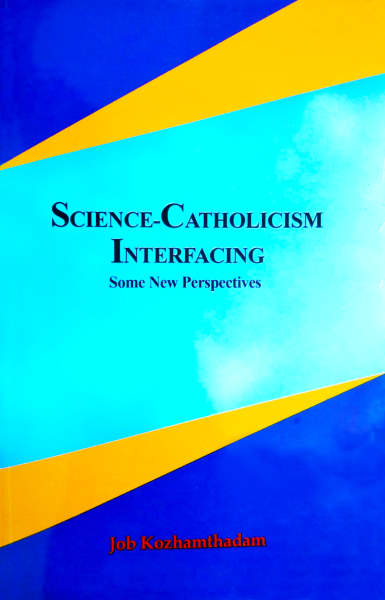
Although in recent times a long chain of writing has been appearing in the area of science-religion interfacing, they have been mostly from scholars in the West. This book is an attempt to present some activities in this field in the Eastern sector of the globe. Two points are emphasized here. Firstly, the old view that modern science and contemporary religions have been at war, with science in the winner’s seat, is a popular myth crated by certain historian of science with certain personal interests and ideologies. Recent research and study by reputed historians of science show that this view has very little historical foundation, although there have been periods of tension and disagreements, Secondly, the Catholic Church has been a major player in the origin and development of modern science, particularly the Jesuit Order.
Victor Ferrao. (New Delhi: Christian World Imprints, 2020). xxviii + 129.
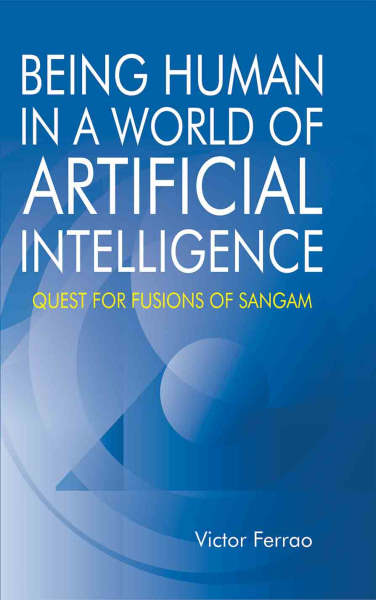
The rapid growth of Artificial Intelligence raises profound questions about being human. Although it appears to compete with us and even outperforms us in several areas, it can never replace us. It does have several benefits to bestow on us yet we cannot get enslaved by it and mindlessly allow it to control our lives. This transformative technology certainly offers us extraordinary promises but all of it is going to come not without perils that will disrupt our very being humans in the world. This book discusses these challenges and opens ethical ways of facing them. Artificial Intelligence is addressing us in several ways and calls us into being. Our response to it has to be integral and integrating us all. This is why this book turns back to Artificial Intelligence and addresses it: ‘Hey You!’ and attempts to direct it towards common human flourishing. Contents cover the themes such as 1. Society and Artificial Intelligence 2. The Brave New World of the Dividual and Condition of Humanity 3. I am Data, therefore I Am Dead 4. Breaking the Chains of Machinic Enslavements: A Quest for a New Ethics 5. Self and Society of the Networks 6. The Quest for an Ethics for the New World of AI 7. Towards Dorsal Thinking and the World of AI 8. AI World and the Challenge to Become a Phronimos (Virtuous Person) 9. AI, Humans and God.
Job Kozhamthadam & Roy Pereira (Eds.) (New Delhi: Indian Institute of Science and Religion, 2021). xx+270.
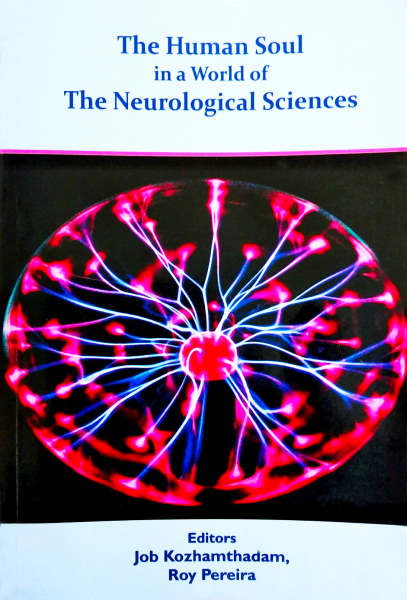
Although belief in the human soul is as old as humanity itself, clarity regarding the reality and nature of the soul remains an elusive enigma. The fifteen chapters of this volume are an attempt at presenting an up-to-date and interdisciplinary approach to unravel this mystery. The consensus emerging from these papers is that the Christian insights and tradition on the issue are essentially in the right direction. But these must be understood and interpreted in light of contemporary developments in the neurological and other branches of science as well as serious philosophical and critical reflection on scientific data. It is hoped that this attempt will render the religious beliefs and insights more relevant and meaningful to contemporary men and women.
Augustine Pamplany (Ed.), (Bangalore: Asian Trading Corporation, 2006). 314pp
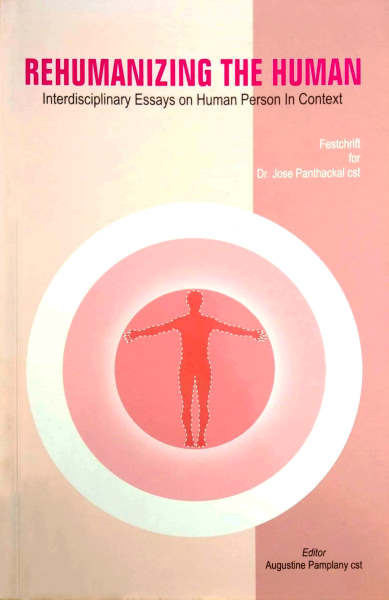
Paying full recognition to the multidimensional thrust of the human context in its multifarious spheres, this book includes a number of studies from scholars ranging from the fields of social sciences, psychology, positive sciences, astrophysics, Indian contextual thinking and the like. The socio-cultural reading of the human context, the scientific appropriation of the human context, and a reflection of the human context from the Indian contextual thinking spell out the central orientations of the boo
